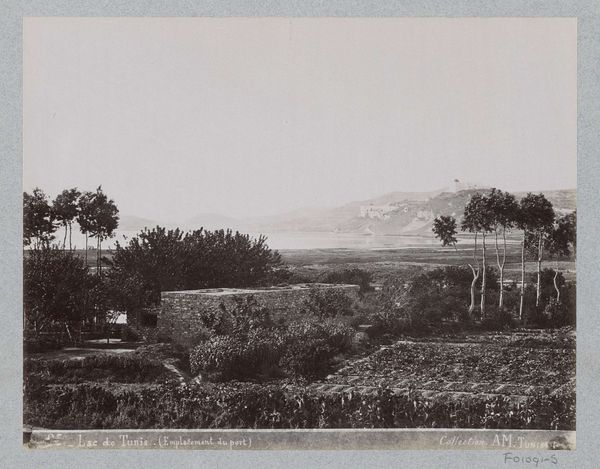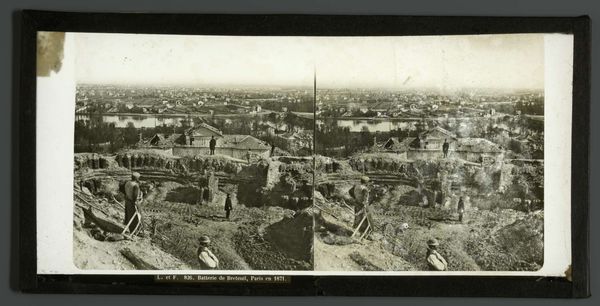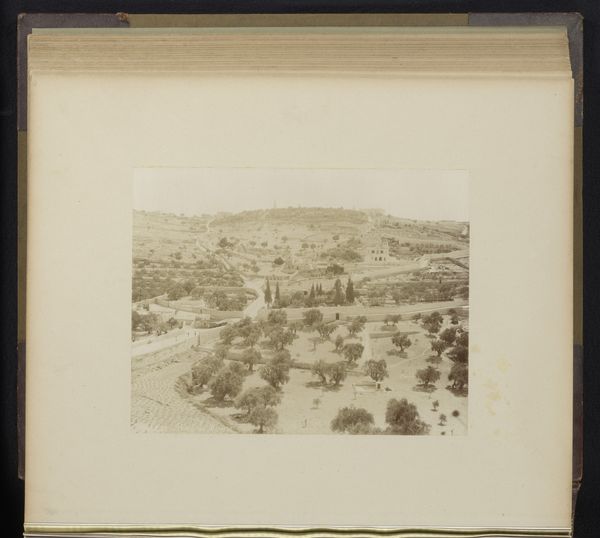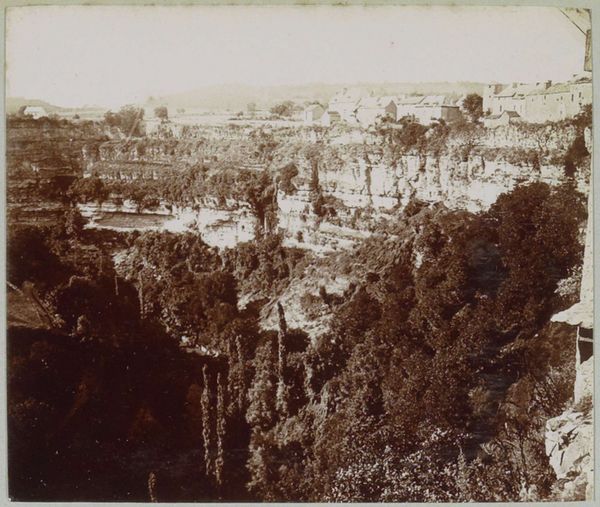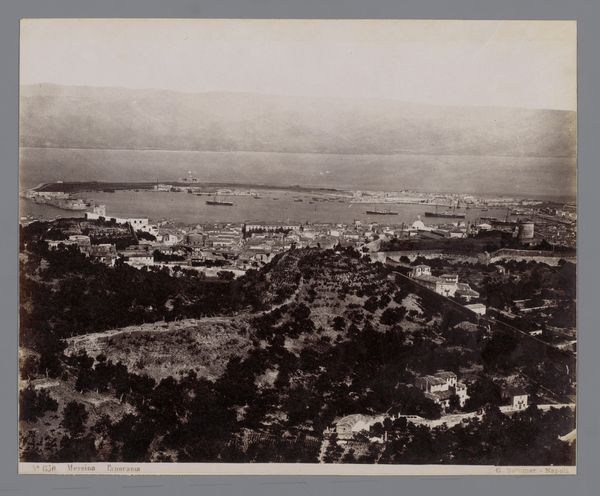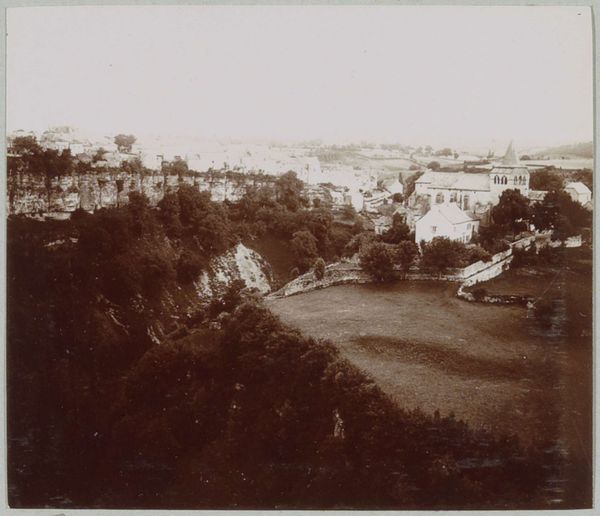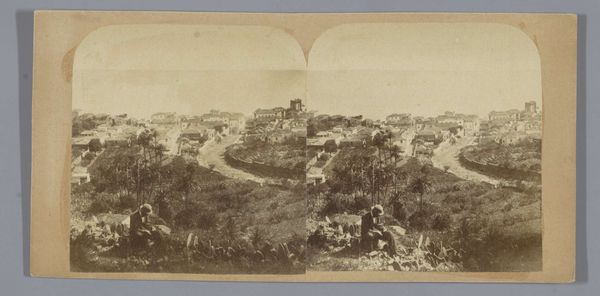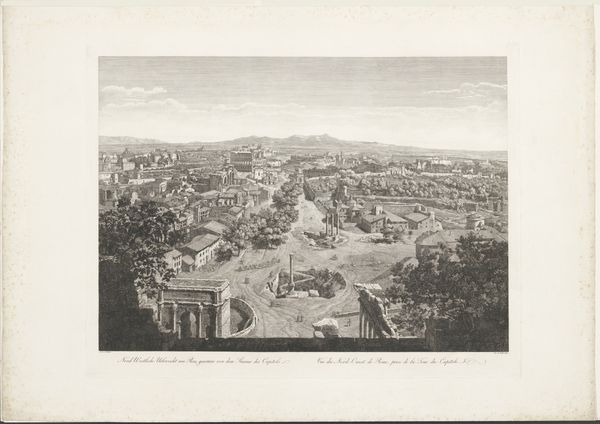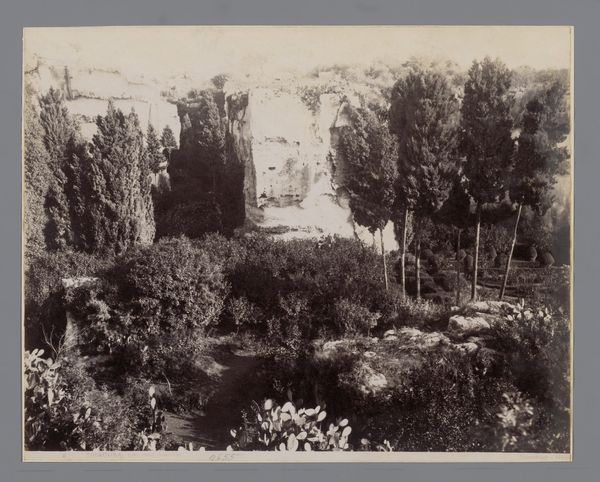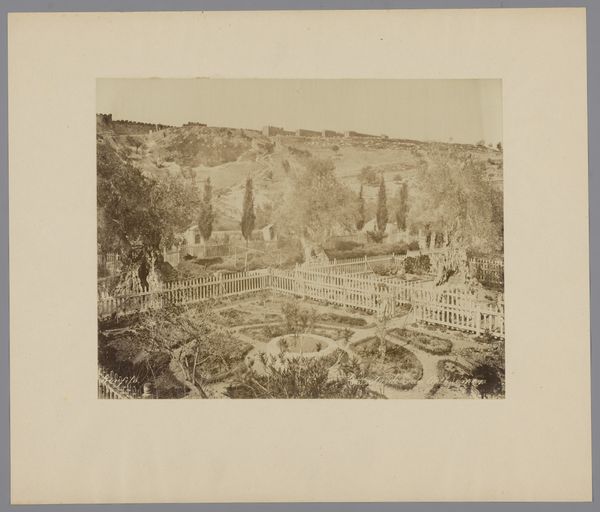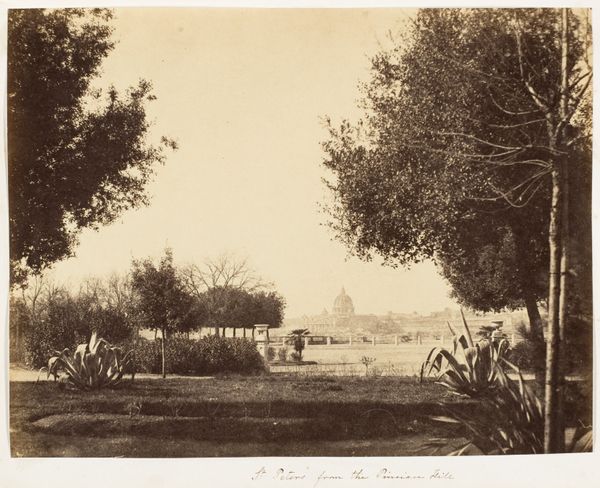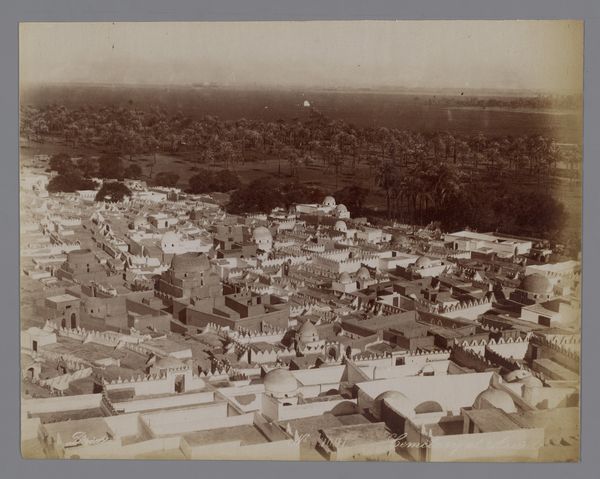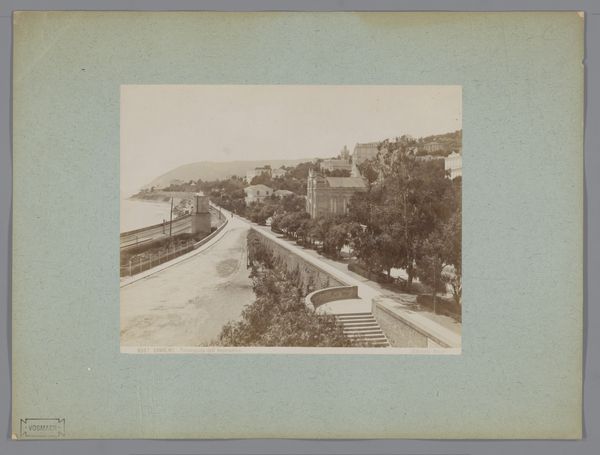
Gezicht op Catania met cactussen en cipressen op de voorgrond 1857 - 1900
0:00
0:00
photography, albumen-print
#
16_19th-century
#
landscape
#
photography
#
cityscape
#
albumen-print
Dimensions: height 194 mm, width 247 mm
Copyright: Rijks Museum: Open Domain
Curator: Giorgio Sommer gifts us a sweeping vista of "Gezicht op Catania met cactussen en cipressen op de voorgrond," captured sometime between 1857 and 1900. It's a photograph rendered on albumen paper, currently residing at the Rijksmuseum. Editor: My first thought? Bleak beauty. All that sky washing down on the stone, the insistent geometry of those dark trees... It’s strangely powerful, considering it’s 'just' a landscape. Curator: Landscape, yes, but consider the interplay of symbols. The cactus, resilient and guarding, contrasts sharply with the cypress, ancient symbols of mourning and transition, commonly found in the Mediterranean area and often associated with cemeteries. Their placement in the foreground framing a bustling cityscape presents a profound commentary. Editor: Okay, I see that tension. It is an uneasy juxtaposition. The prickly desert plants thrusting upward juxtaposed with that straight avenue leading right into the crowded city creates a visual push-pull. Like, nature is trying to claw its way back or something. Curator: Precisely! Catania, a city rebuilt after numerous volcanic eruptions and earthquakes, represents human resilience. The albumen print itself, a process requiring meticulous control, echoes this struggle against entropy. The softness inherent to albumen softens the images, giving a romantic vision despite the serious tonalities. Editor: Romantic but…stark? Maybe it’s the tonal range—everything’s muted, bleached out, as though the sun's been at it for centuries. It also has a surreal depth. Like those little people traveling up the boulevard into the heart of the composition, dwarfed and yet vital. The human story persevering amidst everything. Curator: Absolutely. Think about the late 19th century—a period of intense urban expansion but also burgeoning interest in classical studies, archeology, and botany. This photograph, consciously or not, speaks to that era's deep ambivalence toward progress. Even a hint to Vanitas? The fleeting nature of our modern world. Editor: So it's not just pretty. It’s a loaded botanical, sociological, even psychological landscape. Seeing it now, I feel that melancholy much more strongly. It has shifted from observation into narrative with your words. Curator: Hopefully the symbolism layered into this vision of a Sicilian city creates the subtle drama in the everyday; it is present there for anyone willing to connect. Editor: Agreed, you’ve cracked it wide open! What looked like simple composition now feels complex and meaningful. It gives me new respect for photographs like this!
Comments
No comments
Be the first to comment and join the conversation on the ultimate creative platform.
